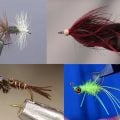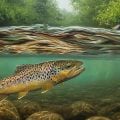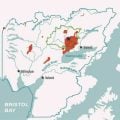Wild Refuges to Save Native Fish: A Complicated Issue
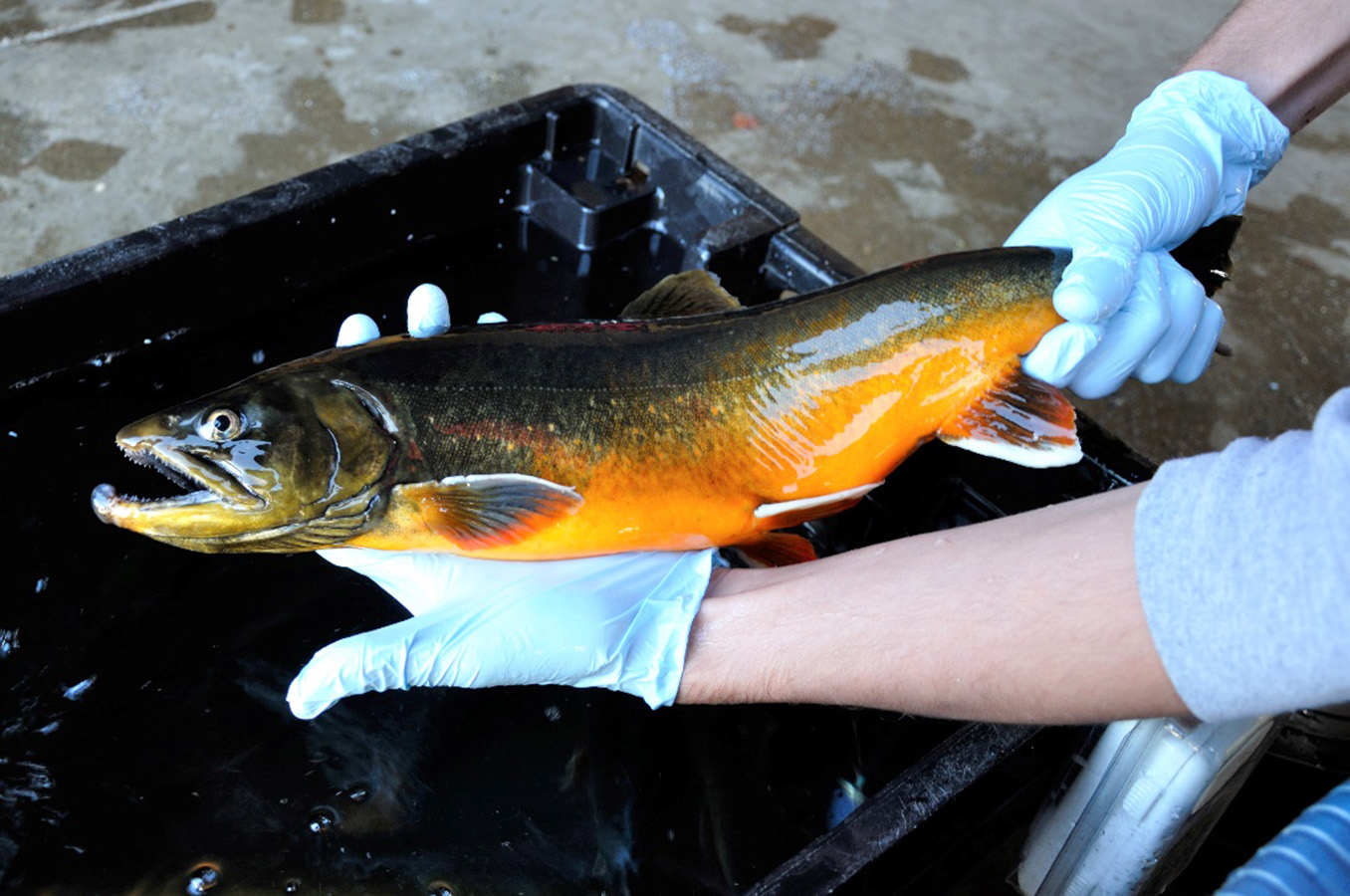
A rare wild native Arctic charr from Maine. Photo by Bob Mallard
Editor’s Note: This is the eleventh article in our series on fly fishing conservation. This series appears with the support of Epic Fly Rods.
When a unique life history strategy, strain, subspecies, or species is at risk of extirpation or extinction within its native range, and regardless of why, it may become necessary to move them somewhere else to prevent their loss. For non-fish wildlife, this usually means zoos and other facilities where captive breeding programs can be implemented. When fish are involved, it typically means moving them to a hatchery, often referred to as conservation hatcheries.
The concept of conservation hatcheries is not new. Atlantic salmon have been propped up by conservation hatcheries for decades, as have Pacific salmon and steelhead. Conservation hatcheries have saved rare cutthroat subspecies, Gila and Apache trout, and Arctic charr in Maine. In some cases, their use is temporary until we can fix what we broke, usually nonnative fish introductions. In other cases, it is ongoing as there is no simple solution for restoring the fish to their native waters.
In theory, conservation hatcheries are a relatively safe place for at-risk fish as they can be monitored and managed. There are, however, issues with regard to genetic management and domestication. Lose your genetic diversity and all the nurturing in the world is not going to save the fish. And when it comes to survival in the wild, domestication is the enemy. Plus, hatcheries can experience disease, virus, and parasite outbreaks due to crowding.
As a native fish advocate, I support conservation hatcheries as does the organization I represent, Native Fish Coalition. I do so however with caveat as to how they should be run and how long these projects should go on. The goals should be to limit domestication as much as possible and maintain sufficient levels of genetic diversity, and it needs to be temporary not in perpetuity. The quicker we can get the fish out of the hatchery and back into the wild the better.
Another method for dealing with at-risk fish is to translocate them to waters where they are not native, including waters that were historically fishless. In some cases, waters are chemically treated to remove other fish species before introducing at-risk fish. Often referred to as “wild refuges,” these surrogate waters are more natural and less managed and controlled than hatcheries. This helps lessen domestication and reduce the likelihood of disease, viruses, and parasites.
Wild refuges are however more volatile and riskier than hatcheries, as we cannot control them to the degree we can the latter. Fires, droughts, floods, extreme temperatures, acidification, nonnative fish and plant introductions, and other events can stress or eradicate translocated fish just like they do other fish. Like conservation hatcheries, wild refuges are not a perfect solution.
To be clear, while less common than conservation hatcheries wild refuges are not new. Aurora trout, a unique form of brook trout historically found in only two waters in Ontario, Canada, were saved through translocation when their native waters became too acidified to support them in the 1950s. They were repatriated to their native waters in the 1980s after lime treatment raised the PH levels. Had this not occurred, they likely would have been lost.
While not by design, several previously species of fish that were thought to be extinct have been rediscovered in nonnative waters where they had been stocked and subsequently naturalized. Had these fish not been moved, they would likely have been lost.
My position, and that of NFC as to what constitutes “native” in regard to fish is at the water level, not geographic boundaries. Unlike terrestrial wildlife, just because a fish is native to a state or even an area doesn’t mean that it is native to a given water within that area. For example, while Yellowstone cutthroat are native to Yellowstone National Park, many park waters were historically fishless. When it comes to fishless waters, all fish are by default nonnative. And while Arctic grayling were native to the Lower Peninsula of Michigan, their distribution was limited to just several river systems.
As a rule, I am opposed to the introduction of nonnative fish, regardless of who is doing it or why. The impacts can be significant, and the results are often unpredictable. Nonnative fish compete with wild native fish for food and space, and can prey on them, disrupt or suppress natural reproduction, swamp genetics, and in some cases hybridize with them. This is not limited to salmonids, or even gamefish, and applies to all wild native fish.
While my position, and that of NFC, in regard to the introduction of nonnative fish is clear and well-documented, neither has taken an absolute position in regard to using so-called wild refuges as a means of protecting at-risk fish. This is because it is not a simple issue, and while conservation needs to be science-based and consistently applied to the highest degree possible, it also has to be pragmatic and somewhat flexible to be effective.
Maine Department of Inland Fisheries and Wildlife proposed removing a never-stocked native brook trout pond from the State Heritage Fish list, a group of waters legally protected from stocking and the dangerous use of live fish as bait. The intent was to stock the water with what would be nonnative Arctic charr from Bald Mountain Pond, a population collapsing under the weight of nonnative smelt and lake trout introductions.
Introducing a nonnative fish on top of native fishes to try to save the former from introduced nonnative fish in their native water seemed contradictory. Sacrificing native species, figuratively as we can’t predict the outcome, to save what would be a nonnative fish just didn’t feel right. The position of MDIFW was that the Arctic charr are rare, and therefore more important. But they don’t feel that way in regard to Green Lake where they are stocking nonnative lake trout on top of native Arctic charr.
Maine NFC opposed removing the water from the State Heritage Fish list as well as stocking it with nonnative Arctic charr. The consensus was that sacrificing a never-stocked native brook trout water to attempt to save what was really a local adaptation, not a genetically unique fish, was not worth the risks. In order to be successful, the charr would have to adapt to their new home, and when they did, they would no longer be what they once were.
NFC countered by suggesting that MDIFW use a water that was currently being stocked. This position was sound as the only success Maine has had to date in regard to translocating Arctic charr is a stocked water, Long Pond near historic Rangeley. In at least 13 of 15 attempts to introduce charr, and several attempts to reintroduce them, all but Long Pond and possibly one other failed. Neighboring New Hampshire hasn’t fared any better, failing in 15 out of 15 times.
The most notable self-sustaining population of nonnative Arctic charr in the nation is Dillon Reservoir in Colorado. This manmade lake is heavily stocked, and home to brown trout, rainbow trout, kokanee salmon, and mysis shrimp, all of which are nonnative. This challenges MDIFW’s position that when it comes to introducing Arctic charr, the lack of competing species is an absolute requirement.
“Dillon Reservoir is annually stocked with approximately 50,000 rainbow trout by the Colorado Division of Wildlife” -TownofDillon.com
“Dillon Reservoir is a prime location for summer or winter fishing. The lake is home to Brown Trout, Rainbow Trout, Kokanee Salmon and Arctic Char.” -TownofDillon.com
“The Arctic char was introduced to the reservoir in 1990… The reservoir is the only public fishery in the lower 48 states outside of Maine where anglers have a chance of landing the prized fish.” -TownofDillon.com
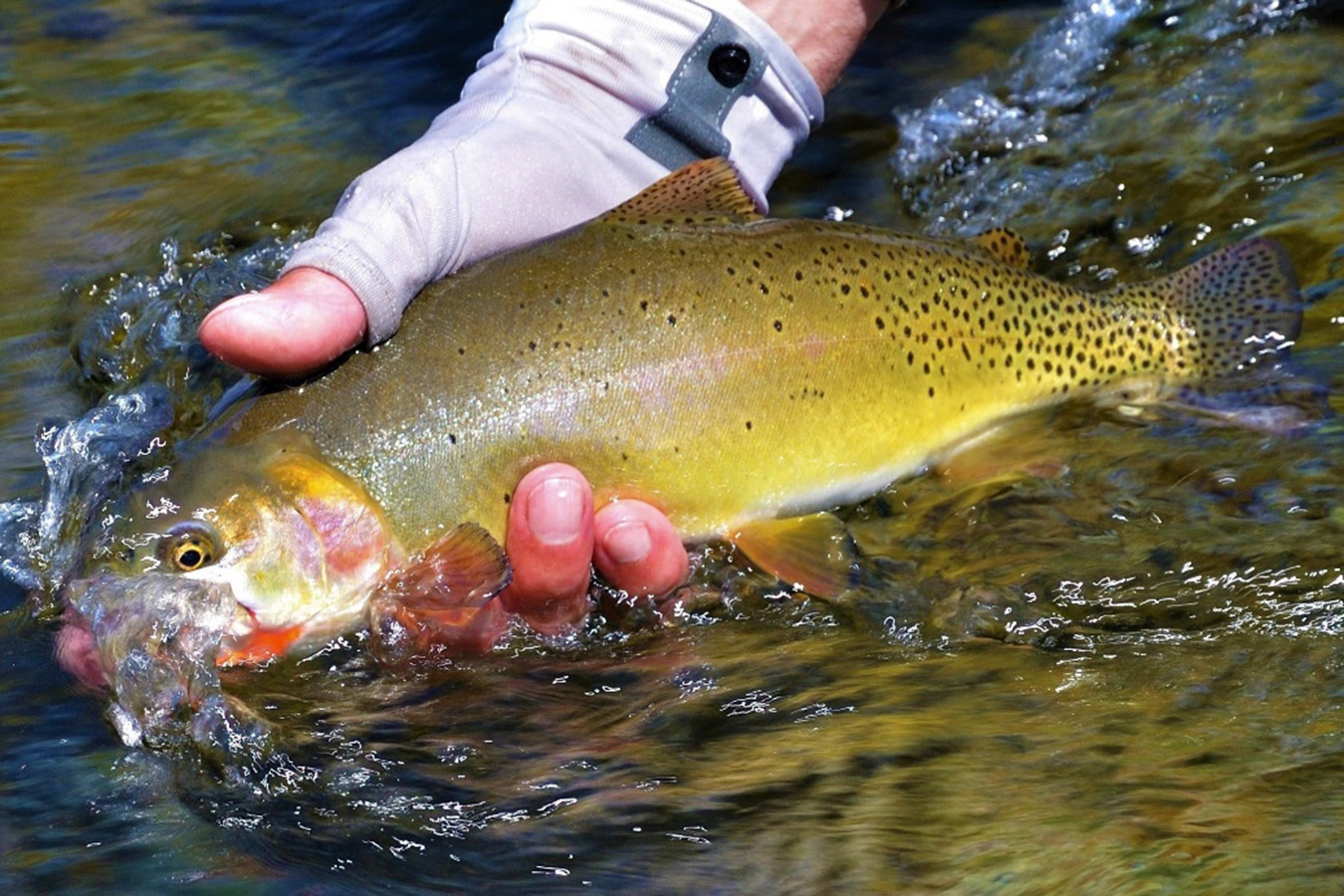
Wild native Yellowstone cutthroat. Photo by Diana Mallard
In general, I do not support the introduction of fish into historically fishless waters because nonnative fish can have a negative impact on insects, amphibians, and wildlife that depends on them. In some cases, such as high elevation waters in California’s High Sierra, introduced trout have been removed from historically fishless waters to protect rare frogs. If fish conservation is to be taken seriously, we need to consider more than just fish.
I am also very concerned with regard to messaging. Many states are facing a nonnative fish epidemic, and it’s fair to say that this poses the biggest immediate threat to our wild native fish. The perception that fish need to be everywhere, and that fishless waters are somehow a wasted resource is part of why we are in the trouble we are in with regard to nonnative fish. In many cases, fish introduced to historically fishless waters have found their way into waters that are home to wild native fish.
The idea that trout, figuratively as it applies to charr and salmon as well, should be unlimited is another problem. Most of the husbandry in regard to fish in America is trout centric. Would we spend what we spend on trout conservation on whitefish? Maine has lost more than 50 lake whitefish populations. What about rare redeye bass? Threatened darters? Cusk? If we are going to do it for trout, we should give equal attention to other at risk fish including non-game species.
If we want anglers to stop moving fish around, we need to lead by example and not do what we don’t want others to do. When we do so, we muddy the water and confuse the masses.
A recent proposal in Montana looks to chemically treat a watershed to remove nonnative rainbow trout that are imperiling wild native Yellowstone cutthroat downstream through hybridization. This includes fabled Slough Creek and Lamar River, two of the most popular cutthroat fisheries in the park, and critically important ecological resources. I fully support this part of the proposal.
While the lower end of the watershed was home to wild native cutthroat, the water above a natural barrier just inside the park was historically fishless. Under the proposal, water above the barrier previously occupied by nonnative rainbow trout will be restocked with cutthroat trout to provide refuge for this stressed subspecies. Tributaries that are currently fishless would not be stocked.
By not stocking currently fishless water, we are sending the message that doing so is wrong. By restocking historically fishless water that is currently inhabited by introduced fish, we are implying that it is not an issue. This inconsistent handling of historically fishless water sends mixed messages and has the potential to confuse the masses.
While I did not actively oppose the second part of the plan, I did not support it either. My reasons were twofold: The reintroduction of fish into historically fishless water and the fact that the refuge would be open to fishing. While the former is not a black-and-white issue, the latter should be as it could be seen as self-serving and a conflict of interest by some.
NFC did not take a position on the project either. The organization does not have a presence in the respective states, nor does it have a clear policy in regard to using wild refuges to house at-risk nonnative fish. If it were in a chapter state, I believe we would have had to take a position as failing to do so would be viewed negatively by some.
In the case noted above, the primary goal is to remove the nonnative rainbows to lessen hybridization with at-risk native cutthroat. Creating a refuge for Yellowstone cutthroat is noted as a secondary goal. Is it worth risking the former by attempting to address the latter as part of the project? Projects like this face enough hurdles due to the chemical reclamation component.
Introducing fish into waters they are not native to or into fishless waters for any reason, including trying to save them, presents a unique challenge to native fish advocates and government agencies. What should the criteria be for determining what should be done, when, and where? Who should define these criteria? Should the rules be the same for life history strategies, strains, subspecies, and species?
Should conservation hatcheries be used to try to mitigate problems with native fish before introducing fish to nonnative or historically fishless waters? Should wild refuges be open to recreational angling? Will we be able to implement these programs in a fair, safe, and consistent manner across state, federal, and tribal jurisdictions?
Could state fish and game agencies use wild refuges to take pressure off protecting and restoring fish in their native habitats? While Maine is pushing to create populations of nonnative Arctic charr, it refuses to suspend the stocking of highly invasive nonnative lake trout over wild native Arctic charr in one water. Will more populations lessen the value of native populations?
Using nonnative and historically fishless waters as wild refuges for at-risk fish raises many questions. While no one wants to lose a unique life history strategy, strain, subspecies, or species, how far should we go to save them? And should it be done at the expense of other wildlife? When we relocate fish to waters where they are not native, have we really saved them? Does it matter where they live, or simply that they live?
Is there room for nonnative and historically fishless wild refuges in native fish conservation? Is there an absolute need for such? Can they be used without watering down and compromising the critically important message that moving fish around is a bad thing? How can we convey this to the masses in a way they will understand and support it?
As a native fish advocate, I take nonnative fish introductions very seriously. I see nonnative fish as the biggest immediate threat to our wild native fish. How does someone who opposes nonnative fish introductions support doing so in some cases? And while there is a difference between not supporting and actively opposing, where should we draw the line?
I believe there may be a place for wild refuges in extreme cases where nothing else has worked, there are no options left, and failing to do so would result in extirpation or extinction. But we need to use this tool wisely, very carefully, and not abuse it. While wild refuges have worked in the past, both deliberately and accidentally, so have conservation hatcheries so this is not an absolute.
As articles go, this is arguably the least definitive I have ever written. I’m admittedly on the fence on this one. So is NFC. The problem is at the micro not macro level. I believe this needs to be dealt with on a case-by-case basis and with open, frank, and fair discussion along with a willingness to compromise when challenges arise. An all-or-nothing position is not good for fish or fish conservation.








